Eretria, located on the southern coast of central Evia along the South Euboic Gulf, is a fascinating blend of ancient history and modern seaside leisure. Often referred to as part of the “Euboic Riviera” due to its scenic beaches and charming resorts, the town also lies at the foothills of Mount Olympus of Evia. Once one of the most prominent city-states in ancient Greece, Eretria boasts a rich archaeological heritage, including a renowned museum and numerous well-preserved ruins. Whether you’re drawn by its deep history or its relaxing coastal atmosphere, Eretria is a must-visit destination for travelers to Evia.
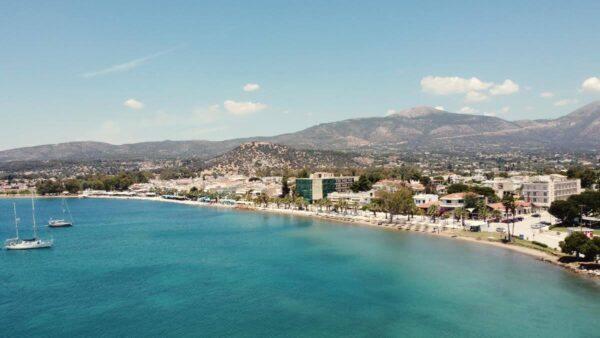
Affiliation disclosure: By purchasing goods or services via the links contained in this post, I may be earning a small commission from the seller's profit, without you being charged any extra penny. You will be thus greatly helping me to maintain and keep enriching this website. Thanks!
How to Get to Eretria
By Car
From Athens, you have two main options:
- Via Chalkida: Drive 97 km north via the Athens-Chalkida highway (E75). Once in Chalkida, follow the signs towards Eretria, which is about a 25-minute drive.
- Via Oropos Ferry: Take the ferry from Oropos to Eretria. The ferry ride lasts about 25 minutes and operates frequently throughout the day. Oropos is approximately a 55 km drive from Athens. See the ferry timetable here.
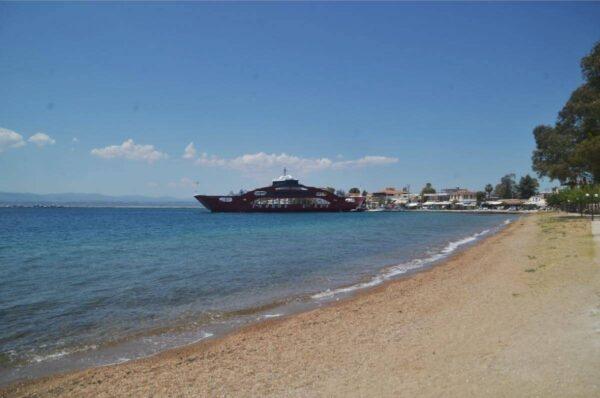
If you haven’t got a car already, you can compare some of the best rental deals here.
By Public Transport
Several buses depart daily for Eretria from Liossion Bus Station (location) in Athens. Check the bus company’s official site for the timetable.
Where to Stay in Eretria
- Luxury: Negroponte Resort Eretria – A 5-star beachfront resort offering premium amenities, including pools, spa services, and fine dining.
- Moderate Budget: Avantis Suites Hotel – A comfortable seafront stay with modern rooms and a relaxing atmosphere, ideal for families and couples.
- Low Budget: Sun Rise Hotel Studios & Apartments – Affordable and cozy accommodations with self-catering options and easy access to the beach.
Explore more options on the convenient map below:
Stay22 is a handy tool that lets you search for and compare stays and experiences across multiple platforms on the same neat, interactive map. Hover over the listings to see the details. Click on the top-right settings icon to adjust your preferences; switch between hotels, experiences, or restaurants; and activate clever map overlays displaying information like transit lines or concentrations of sights. Click on the Show List button for the listings to appear in a list format. Booking via this map, I will be earning a small cut of the platform's profit without you being charged any extra penny. You will be thus greatly helping me to maintain and keep enriching this website. Thanks!
What to Do in Eretria
Eretria Museum
This small but impressive archaeological museum houses a collection of artifacts from Eretria’s ancient past, including sculptures, pottery, and inscriptions. Among its highlights are a well-preserved kouros statue, terracotta figurines, and intricate mosaics that provide insight into the daily life and artistic achievements of ancient Eretria. The museum also features inscriptions detailing trade networks and political events, along with exhibits showcasing the city’s role in colonization and warfare. It’s an essential stop for understanding the city’s historical significance and cultural legacy. (location)
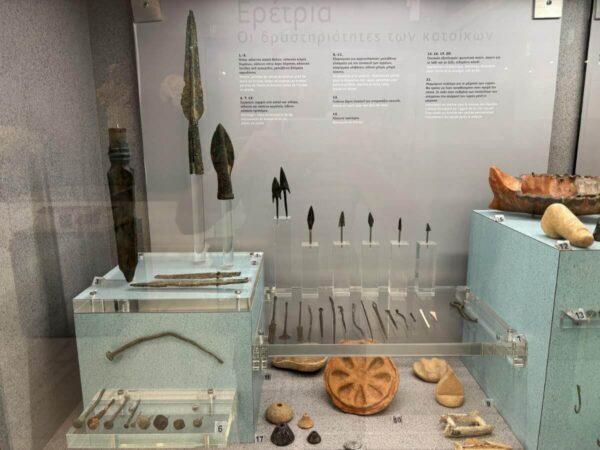
Archaeological Sites
Here are the most notable ancient ruins in Eretria:
Acropolis of Eretria
Perched on a hill just a 20-minute hike from the town center, the ancient Acropolis offers stunning views over the town and the Euboic Gulf. It was once the fortified stronghold of the city-state, with remnants of defensive walls, foundations of ancient structures, and scattered inscriptions providing glimpses into its past grandeur. (location)
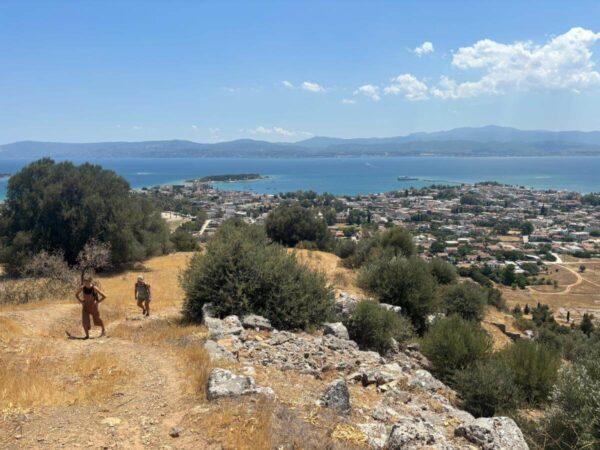
Ancient Theater of Eretria
One of the best-preserved theaters in Greece, this 5th-century BC structure showcases the architectural prowess of the Eretrians. Built with limestone and designed in a semi-circular layout, it once accommodated around 6,000 spectators. The theater featured an orchestra, a skene (stage building), and well-crafted stone seating, reflecting the advanced engineering of the era. The ruins allow visitors to imagine grand performances from the past, with its impressive acoustics still evident today. (location)
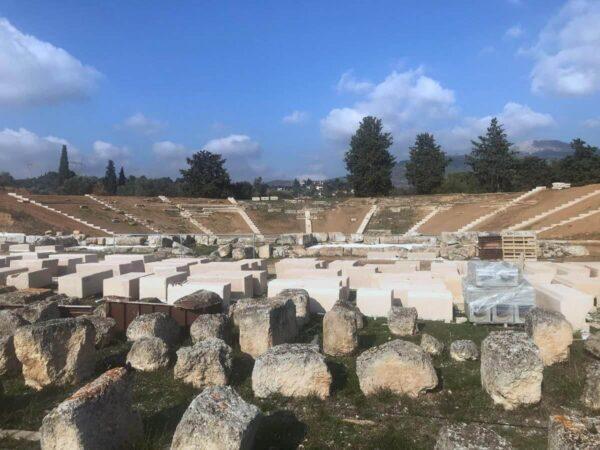
Temple of Apollo Daphnephoros
Dedicated to Apollo, the god of light, music, and prophecy, this temple was the religious center of ancient Eretria. The Eretrians revered Apollo Daphnephoros—meaning “laurel bearer”—as their patron deity, believing he guided their city’s prosperity and expansion. Today, its ruins stand as a testament to the city’s former glory, reflecting its spiritual and cultural significance in antiquity. (location)
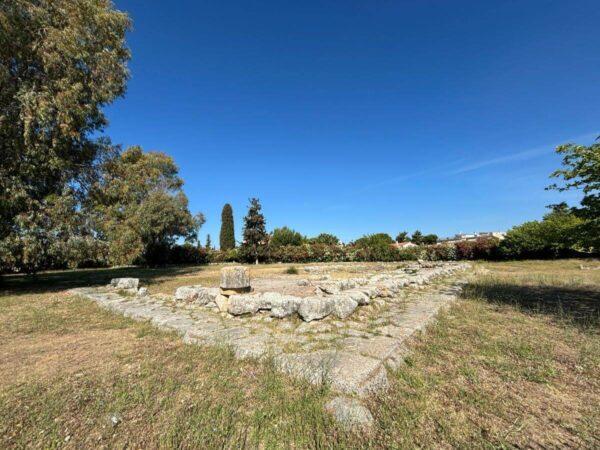
Temple of Isis
A rare find in Greece, this temple is dedicated to Isis, the Egyptian goddess of magic and motherhood, signifying the cultural exchanges between Eretria and Egypt in antiquity. (location)
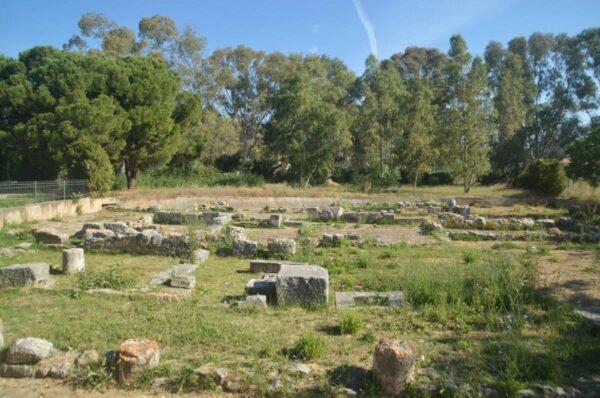
Hellenistic Baths
These ancient baths provide insight into the sophisticated urban planning of the Hellenistic period. (location)
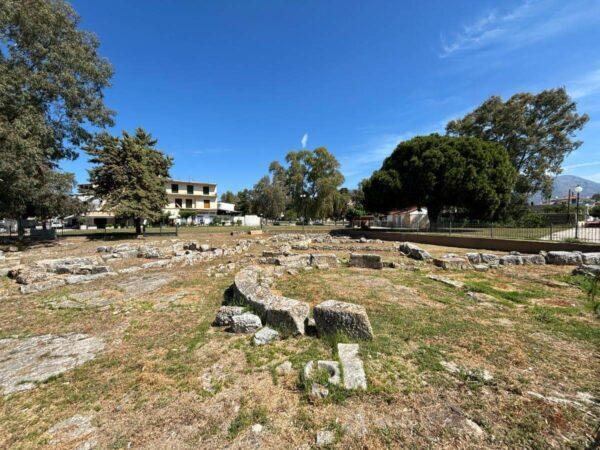
Tomb of Erotes
A fascinating burial site adorned with reliefs, likely linked to the worship of Eros, the Greek god of love and lust. Located about a half-hour walk from the town center, the site offers an intriguing glimpse into ancient funerary practices. (location)
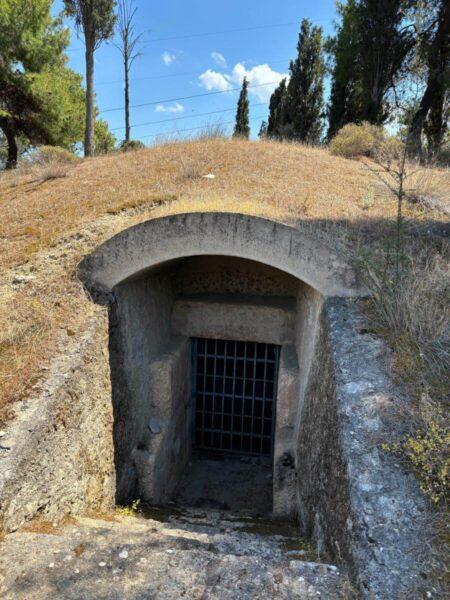
Dreams Island (Nisi ton Oneiron or Pezonisi)
A small, picturesque islet connected to Eretria by a bridge, Dream Island is an idyllic spot for a stroll, offering lush greenery and panoramic sea views. The islet has a rich history, once home to a now-abandoned hotel whose buildings are adorned with striking murals, adding an eerie yet artistic charm to the landscape. Scattered around its periphery are small hidden beaches, perfect for a quiet retreat away from the busier coastline. (location)
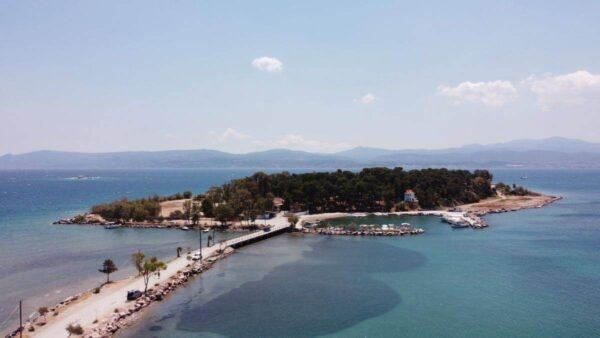
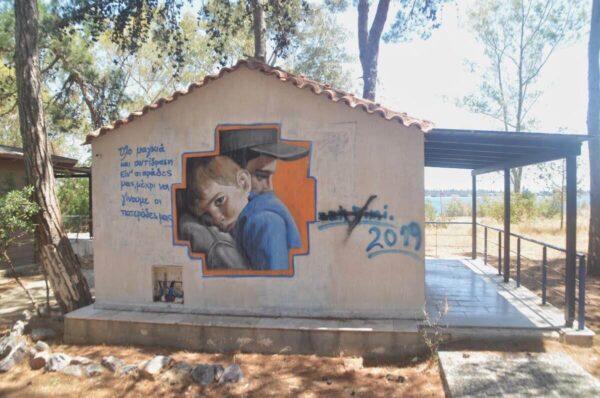
Visit Kanaris’s House
A historical landmark linked to Greek naval hero Konstantinos Kanaris, this house showcases elements of traditional 19th-century Greek architecture. Kanaris played a key role in the Greek War of Independence, famously using fire ships to destroy Ottoman vessels. After the revolution, he became a prominent political figure, serving as Prime Minister of Greece multiple times. In his later years, he moved to Eretria, where he spent his retirement, and his house remains a testament to his legacy. (location)
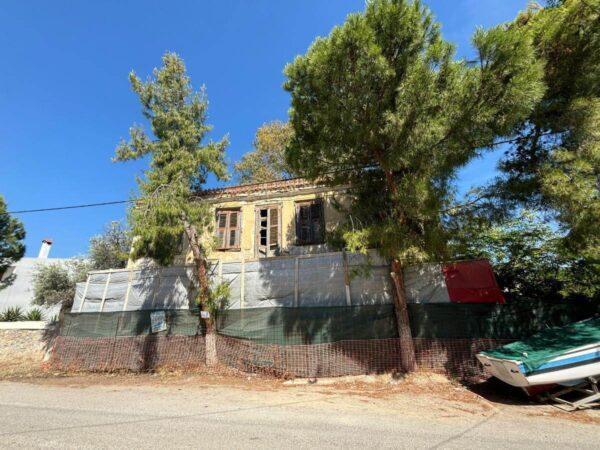
Beaches
Eretria has several beautiful beaches with clear waters, perfect for swimming, sunbathing, or enjoying a seaside meal at a taverna. The main organized beach, located within the bay, offers sunbeds, umbrellas, and beachfront cafes, making it a lively and convenient option. For those seeking a quieter retreat, a more secluded beach to the east provides a peaceful atmosphere and stunning sunrise views.
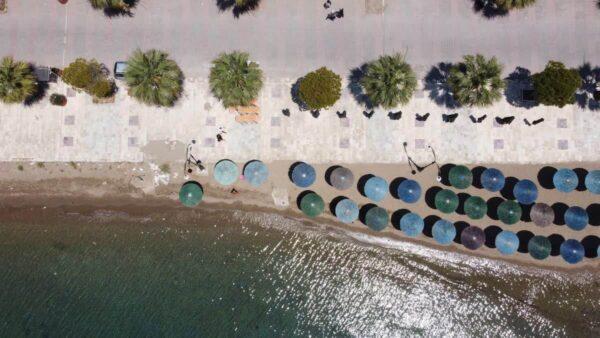
Boat Tour to Agia Triada and Aspronisos Islands
Explore the nearby islets, including a fascinating shipwreck with its mast still visible above the water. Ask around the port to hire a boat.
Hike Mount Olympus of Evia
Enjoy nature and panoramic views with a hike up this lesser-known Olympus, which provides a refreshing escape from the seaside. Look here for trail information.
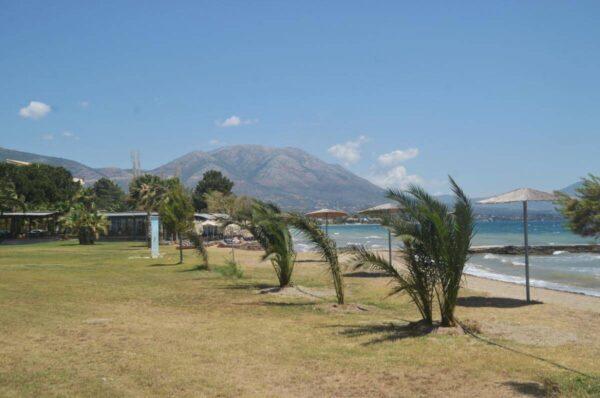
Eat & Drink
- Nea Psarra Seafood Tavern – A traditional Greek seafood tavern known for its fresh fish, grilled octopus, and classic ouzo pairings. Ideal for a relaxed meal by the sea.
- Riviera Restobar – A stylish spot offering a mix of Mediterranean dishes and cocktails. Perfect for enjoying food and drinks with a waterfront view.
- Momenti Cafe Pizzeria – A family-friendly spot that combines a café, a pizzeria, and a play area for kids. It offers a relaxed atmosphere where parents can enjoy coffee, pizza, and other casual bites while children have fun in the designated play zone.
- Stamatoukos Gyros & Grill – A traditional Greek grill house specializing in charcoal-grilled meats, including souvlaki, lamb chops, and sausages. Known for its hearty portions and simple, flavorful dishes, it’s a great spot for meat lovers looking for an authentic Greek taverna experience.
- Nemesis Cocktail Roof Bar – A stylish rooftop bar offering creative cocktails and a relaxed atmosphere with panoramic views of the area. Whether you’re in the mood for a classic drink or a signature mix, this spot is ideal for unwinding in the evening.
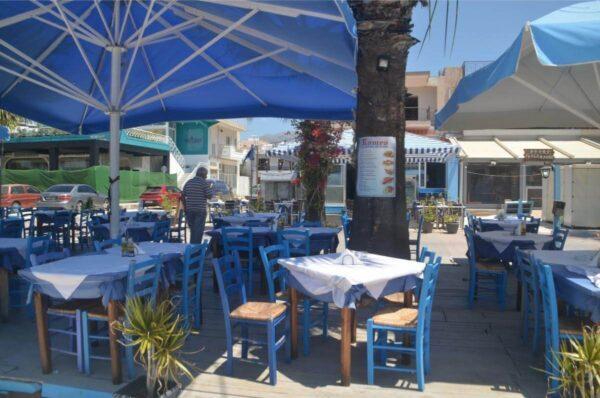
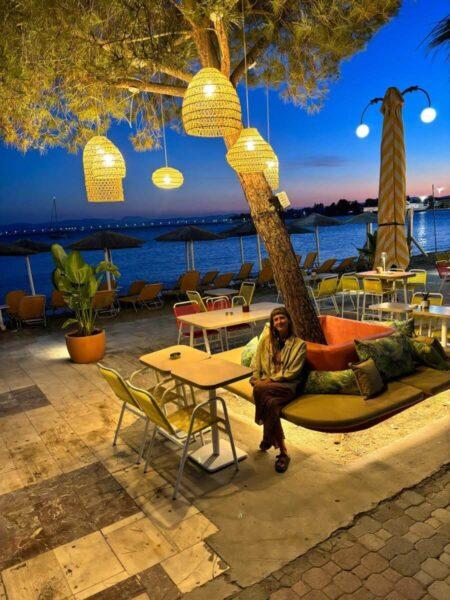
History of Eretria
Ancient History
Eretria has been inhabited since the Neolithic period (3500-3000 BC), though it is unclear if there was a permanent settlement at that time. The first confirmed organized habitation dates to 3000-2000 BC. During the Late Bronze Age (1600-1100 BC), the settlement saw a decline, and by the Geometric period, it was completely abandoned. The classical city was founded around the 9th century BC, likely as the port of Lefkandi, located 15 km westward. The name Eretria derives from “eretes” (rower), though Strabo notes an earlier name, Arotria. Following the destruction of Lefkandi in 825 BC, Eretria rose as a regional power.
Homer mentions Eretria in the “Iliad” as one of the cities that sent ships to Troy. In the 8th century BC, it became one of the most powerful Euboean city-states, controlling Andros, Tinos, Kea, and parts of the Boeotian coast. Eretrians also co-founded colonies in southern Italy with the Chalkidians, such as Pithekoussai and Kyme. However, towards the late 8th century BC, Eretria and Chalkida engaged in the Lelantine War, a prolonged conflict for control of the Lelantine Plain. Eretria was ultimately defeated and lost much of its territorial influence.
Eretria continued expanding in the northern Aegean, Italy, and Sicily. In 499 BC, it joined Athens in aiding the Ionian Revolt against Persia. As retaliation, Persian forces destroyed Eretria in 490 BC, desecrating its temples, including the grand Temple of Apollo. The city was later rebuilt and participated in the Battle of Plataea (479 BC) with 600 hoplites. It became a member of the Athenian League but rebelled in 446 BC before rejoining. During the Peloponnesian War, Eretria sided with Athens against Sparta, but after the Battle of Eretria in 411 BC, Euboea revolted against Athenian control.
Following Sparta’s victory in 404 BC, Athens eventually regained dominance in Euboea due to its economic importance. Eretria revolted again in 349 BC. In 343 BC, Philip II of Macedon gained control of the city, but in 341 BC, Athenian general Demosthenes temporarily retook it. However, the Battle of Chaeronea in 338 BC marked the definitive end of Eretria’s significance as a major city-state. The Romans plundered the city in 198 BC, and it suffered further destruction during the Mithridatic Wars in 87 BC, ultimately leading to its abandonment.
Modern History
The modern town was established in 1824 by refugees from Psara following the island’s destruction during the Greek War of Independence. The settlement was initially named “Nea Psara” in honor of its founders. In the Third National Assembly (1826-1827), the Psarians formally requested a permanent resettlement site, but having already secured land in Aegina, they did not press the matter. The Bavarian administration officially designated Eretria for settlement in 1836, but earlier attempts to establish a Psarian community there had failed due to disputes over land allocation. The town was planned by architects Stamatis Kleanthis and Eduard Schaubert in 1834. By the late 19th century, the name “Nea Psara” gradually faded, and “Eretria” became the dominant designation.
Places to Visit nearby
- Chalkida – The capital of Evia, known for its tidal phenomenon and lively waterfront.
- Lefkandi – A significant archaeological site with remains from the Dark Ages of Greece.
- Amarynthos – A charming coastal town with beautiful beaches and ancient ruins.
- Dystos Lake – A serene spot for nature lovers and birdwatchers.
- Steni Dirfyοs – A mountain village ideal for hiking and traditional Greek cuisine.
Videos
Photos
View (and if you want use) all my photographs from Eretria in higher resolution.
